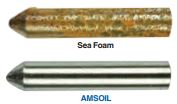AMSOIL UPPER CYLINDER LUBRICANT: I use it and it works! Now on the market for about a year: AMSOIL Upper Cylinder Lubricant (UCL) is the latest addition to the gasoline additive lineup. It delivers more lubricity than the competition and battles ethanol-related corrosion. Fuel Additive Product Overview Upper cylinders are one of the toughest areas […]
You are browsing archives for
Tag: sea foam
Small engine won’t start? Identifying th
Small engine won’t start? Bad gas is the number-one reason, and here’s how to prevent it. Len Groom | TECHNICAL PRODUCT MANAGER, POWERSPORTS In northern Minnesota, where I live, the temperature occasionally breaks 80ºF (27ºC) in the summer. When it does, it’s time to fire up my Jet-Skis* and hit the lake. The last thing […]

